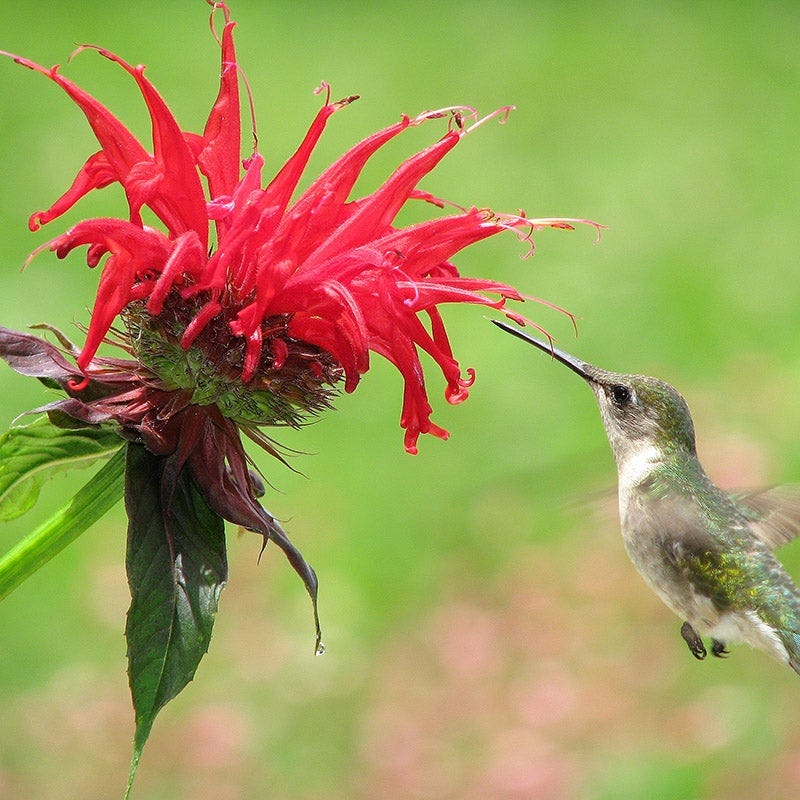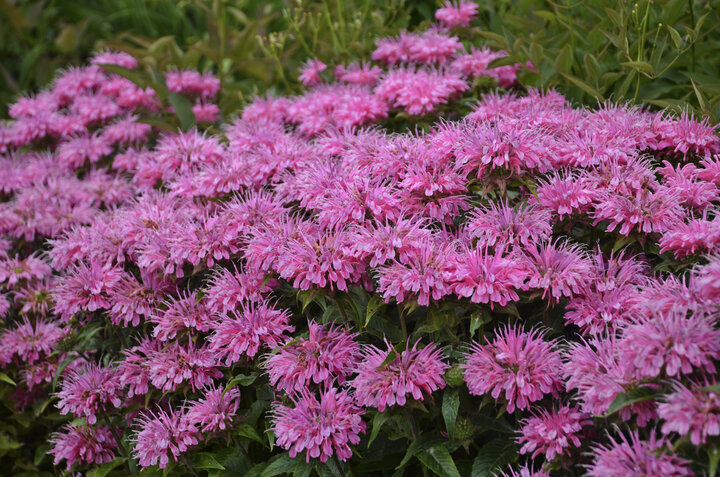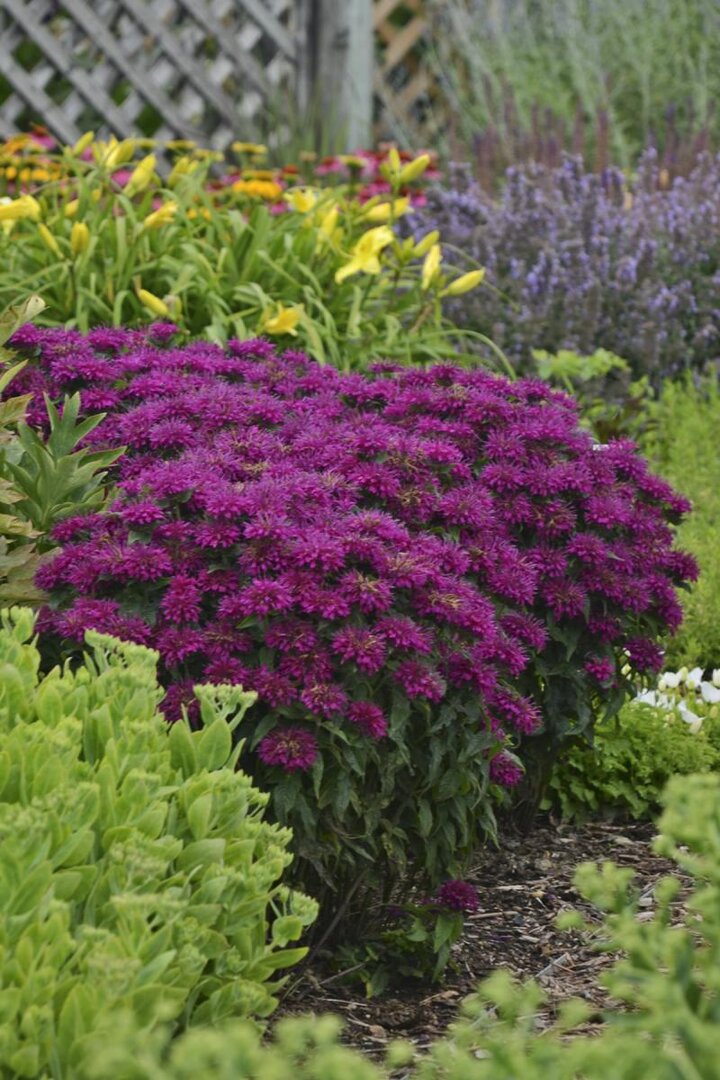
'Jacob Cline' Monarda from American Meadow. Images from the National Garden Bureau
Monarda is a genus that has a long history of being used as a medicinal herb. As the common name Bee Balm implies, it has also been used to soothe bee stings.
But did you know the Oswego Indian tribe used this plant to make an herbal tea and they taught the early American settlers how to do so as well? This just happened to come in very handy following the Boston Tea Party. As the settlers revolted against the British tax on tea, they drank tea made from Monarda instead, thus thumbing their noses at the British and their taxes.
Monarda is a member of the mint family and consists of multiple species, most of which are hardy perennials and all of which are native to certain regions of North America. Summertime flowering on all these species is quite attractive to humans and pollinators.
Monarda Species
Monarda punctata, aka Horsemint or Dotted Mint, is somewhat of an unruly native prairie plant characterized by tall unbranched stems topped with rounded clusters of pink or lavender tubular flowers. The stacked combination of speckled flowers and colorful bracts make this distinctive and unusual.
Monarda fistulosa, or wild Bergamot, is one of the species commonly used for medicinal purposes. Being highly aromatic with showy lavender-pink flowers, it is also used as a honey plant.
Monarda didyma, Scarlet Bee Balm, has long been cherished for not only its use for tea but also its ornamental value. The bright scarlet/red flowers of M. didyma are still a part of many ongoing breeding programs with Monarda.
It has been a long road from these native species of Monarda to the prized ornamental cultivars available today. Some of the first hybrids of M. didyma x M. fistulosa produced vibrant flower colors with a more well-behaved plant, but they continued to be plagued by their native attributes of being highly susceptible to mildew, somewhat tall and leggy and had a tendency to spread by rhizomes.
New Varieties
Modern breeding has introduced many new cultivars that are much more suitable in the ornamental landscape. Along with many stand-alone varieties with notable attributes of their own:
- ‘Marshall’s Delight’ – Received Award of Merit from Royal Horticultural Society
- ‘Gardenview Scarlet’ – Selected by the Chicago Botanic Garden as an outstanding perennial for the Midwest.
- ‘Petite Delight’ – The first of its kind dwarf introduction of monarda at just 12-15 in. tall.

- Monarda didyma ‘Grand™’ is from the Morden Breeding Program in Manitoba and an exceptionally hardy Monarda. Characterized by a profusion of bright flowers atop mid-sized plants, these also offer very good mildew resistance.
- The Sugar Buzz Monardas form a solid dome of color. The 2- to 2 ½-in. flowers top off the strong stems and deep green foliage of this series. Medium in height at around 20 in., the eight colors in this series display above-average mildew resistance and stay well contained in the garden.
- 'Balmy™ Monardas have relatively large flowers on a fully compact plant. Balmy comes in at just 10-12 in. with exceptional mildew resistance and deep green foliage. They are dwarf and mounded, so bring new uses to the landscape.
Home Gardening Tips
- While some Monarda species come from seed, did you know most newer selections are vegetatively propagated and are quite easy to care for in rich and organic, or just average soils?
- Monarda will die back to the ground in colder climates. They can then be cut back to 1-2 in. stems. It’s also a good idea to remove dead leaves and stems from the area, especially if mildew has been observed on the foliage.
- As Monarda emerges from the roots/rhizomes in the spring they may be pinched to create a bushier habit if desired.
- In the full sun, they will produce a plethora of brilliant flowers beginning in mid-summer. Pair these with Achillea, Agastache, or Phlox for a smooth transition of garden color into fall.
- As flowers fade, deadheading is beneficial to encourage additional flowering.
- The plant is deer and rabbit resistant.
Monarda brings a lot of charm and interest to the garden. Mass plantings in naturalized areas are a showstopper and create a high-traffic area for butterflies, hummingbirds, and bees.

For more information on this year's featured plants, including sources of monarda, visit the National Garden Bureau. The National Garden Bureau recognizes and thanks Darwin Perennials, an NGB member, as author and contributor to this fact sheet.
Images from the National Garden Bureau
-
'Jacob Cline' from American Meadow
-
'Sugar Buzz Bubblegum Blast' from Ball Horticulture
-
'Balmy Rose' from Ball Horticulture
-
'Sugar Buzz Grape Gumball' from Ball Horticulture